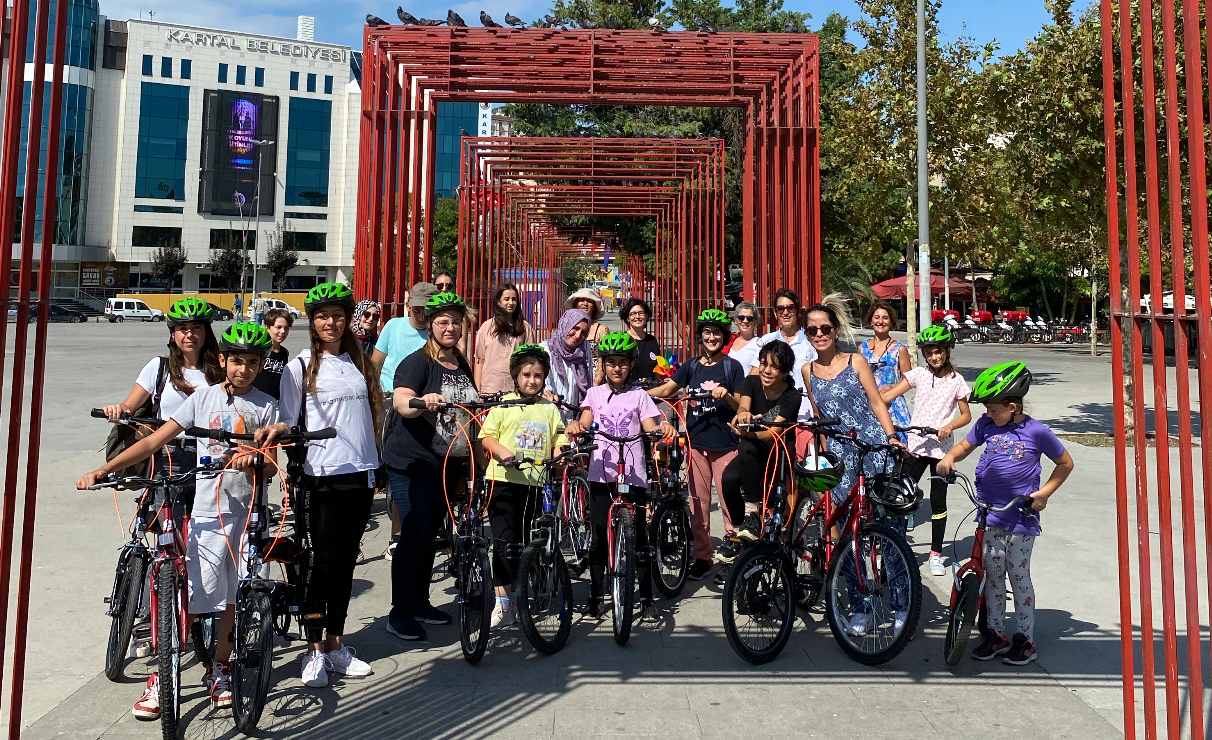Incorporating the needs of children into a city’s cycling strategy benefits all users. Facilitating active mobility for this demographic also amplifies the associated benefits because of their more vulnerable nature as well as their significant share of the urban population.
This page documents useful facts, split into focus areas, for the promotion of cycling for young people.
—
Mobility:
- Various studies demonstrated that major barriers for children from actively commuting to school (via foot or cycling) included distance to school, parents’ concern for their child’s safety (motor-vehicle traffic, harassment, etc.), lack of proper cycling infrastructure, and associated transport costs (Merom et al., 2006; Christie et al., 2011; Hoffman et al., 2013).
- Furthermore, these barriers are particularly prevalent for children living in disadvantaged areas, particularly amongst ethnic groups (Christie et al., 2011).
- These barriers could be addressed by environmental modifications to reducing speed limits, and the overall decrease of motor-vehicle traffic in residential areas.
- Improving safety perceptions, even in small proportions can increase so much as 84% of number of physically active children in schools (Parley et al., 2007).
- Transport for London estimated in 2018 that 25% of weekday morning peak car trips are for school drop-offs, a total of 254,000 trips a day
- A longer travel time, use of a smart phone, or engaging in social activities during school commute can positively affect cognitive performance of children in school (Westman et al., 2016).
Health:
- The World Health Organisation estimates that over 80% of adolescents are insufficiently physically active and this lack of physical activity starts at a young age.
- A high proportion of lifelong routines and tendencies are shaped by an individuals’ routines during their childhood, and developing sustainable habits and customs during this period such as active mobility have the ability to reap prolonged health benefits, well into adulthood (Merom et al., 2006).
- Access to bicycles and programs focused on promoting cycling can help increase activity during critical time-periods for children (Biddle et al., 2011).
- A physically active life and avoiding long episodes of sedentary behaviour help prevent health complaints and improve wellbeing among adolescents (Ng et al., 2020).
- In children and adolescents, there is strong evidence for improved cardiorespiratory endurance and muscular fitness, favourable body composition, improved bone health, and improved cardiovascular and metabolic health biomarkers (Oja et al., 2011).
- Cyclists had 4.6-5.9% higher aerobic power, 10-16% higher isometric muscle endurance, and 6% better flexibility than walkers & passive travellers (Andersen, 2006)
- Children & adolescents who cycled to school were nearly five times as likely to be in the top quartile of fitness (Cooper, 2009)
- Both cycling and walking to school can help build self-esteem, reliant on greater independence and perceived self-efficacy (Biddle et al., 2019).
- A study conducted investigating relationships between travel-related attitudes, travel behaviour, and the emotional well-being of children with primary school children in Austria demonstrated a positive association of active school travel and improved psychological well-being (Stark et al., 2018).
- Physical activity has been shown to help enhance cognition through improved memory, and foster the development of executive functioning skills (Tomporowski et a., 2011; Hoffman et al., 2013), as well as contributing to higher academic achievement.
- Cycling benefits include higher self-esteem and less depressive and anxiety-related symptoms (Nelson & Gordon-Larsen, 2006).
- A study involving over 171,000 teenagers from 37 countries revealed that young people who lead physically active experience psychosomatic symptoms less frequently (Marques et al., 2019)
- Children affected by cerebral palsy (a group of disorders that hinder one’s mobility and ability to maintain balance) reported that through adapted cycling programs, they are able to increase their personal cycling uptake and thus benefit from increased sense of well-being, independence, achievement, and confidence (Pickering, 2013).
Community:
- Having more active friends, parental encouragement and supervision has the potential to result in a significant increase in cycling uptake amongst youth (Cleland et al., 2010).
- A US study showed that 71% of parents surveyed had walked or biked to school when they were kids, but only 18 percent of their children do so now. (Appleyard in Bloomberg)
- Children who walk or bike to school are able to map their neighbourhood better than those who drive in high traffic areas, including noting 43% more locations in which they can play. (Appleyard in Bloomberg)
Environment:
- Air pollution (contributed to by cars especially in low-income ares of cities) has been directly linked to child fatality.
- Air pollution particles have been found in the brain stems of young people and are intimately associated with molecular damage linked to Alzheimer’s and Parkinson’s disease. (Environmental Research)
- Children travelling in cars are 9-12 times more exposed to air pollution to children walking or cycling (Prof Stephen Holgate in The Guardian)
- Children are more vulnerable to air pollution than adults because air pollution can stunt the growing of their lungs and because it increases the risk of sensitisation which can lead to asthma and other respiratory conditions. (Prof Stephen Holgate in The Guardian)

